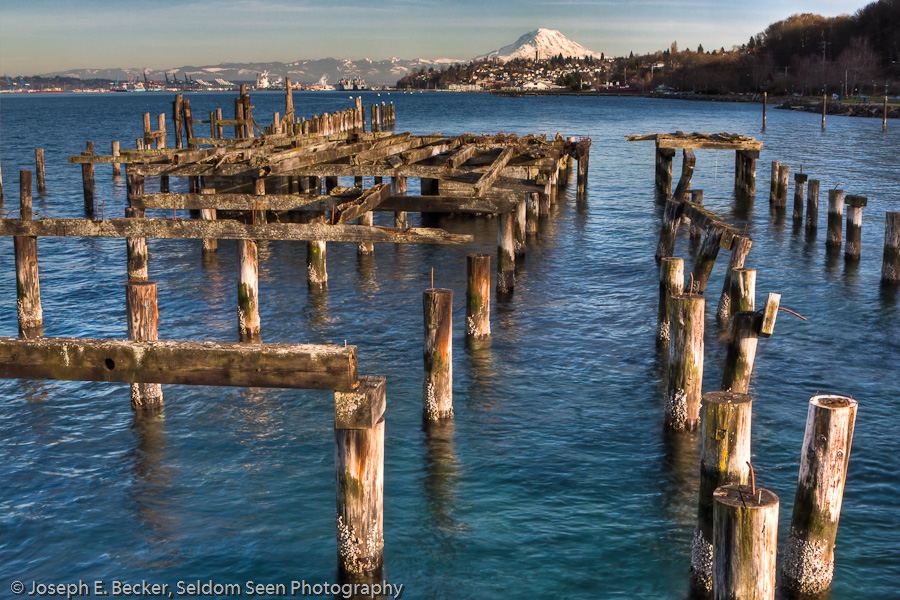 I recently read a blog post by Tim Grey on photographic perspective. In it, Tim Grey asks his readers:
I recently read a blog post by Tim Grey on photographic perspective. In it, Tim Grey asks his readers:
“Is it ever ‘wrong’ to present an image as ‘real’ if we’ve used a bit of perspective to create a scene that isn’t exactly representative of reality? Creating tricks of perspective can be done very easily by changing your position relative to the subject or changing lenses on the camera. Is that wrong? “
In response, I commented:
“I don’t believe it is wrong to present something as ‘real’ just because of the perspective. Perspective has been an important part of photography as long there has been cameras. Am I suppose to label every image taken with a telephoto lens as ‘this image may not represent reality as you experience it if you visit this location?’
I love taking telephoto shots of Mount Rainier, such as the one shown here [my original response included a link to the the image shown below]. When showing images like this, many people comment on how it can’t be “real”, the mountain is not that close. But this is what the camera sees. It’s the same as the human eye sees at the same location, it’s just that the human eye also takes in a much broader view, so the isolate perspective is not realized. If you use binoculars from the same vantage point, you would get essentially the same view. Is the view from binoculars not ‘real’?”
I thought I’d explore this a bit further in this post. The image above and the image below, both of which show Mount Rainier, but with differing perspectives, where both taken from the spot just 4 minutes apart. The one above (which is actually a HDR image with 3 exposures) was captured with a setting of 24 mm (38 mm equivalent) on my 24-70 mm lens, and thus represents slight wide-angle view. The one below was taken with a setting of 175 mm (280 mm equivalent) on my 70 to 200 mm lens, and represents a telephoto view.
It’s images like the one below that get comments about not being real (I’ve been asked more than once if I’ve photoshopped the mountain in). It is easily shown that the image below is real, with no Photoshop trickery (at least if you believe the upper photo is “real”). If I crop the upper photo to the same field of view as the second photo (as shown in the third photo), the compressional distortion is the same, and the photos look very similar (except of course for the quality on the extremely cropped version). FYI – the pier in front of the buildings on the photo below is Les Davis Pier, featured in my last post on night photography.
I love to play with perspective distortion in my images, using various focal lengths and camera to subject distances to expand (with wide-angle shots) or compress (with telephoto shots). There is a good explanation of the phenomena on Wikipedia.
Since Tim Grey inspired this post, I might as well put in a plug for him. Tim teaches about digital photography and imaging. He provides an excellent, free daily email service that provides answers to digital photography questions – often involving processing with Photoshop or Lightroom. I’ve gotten is daily email for years, and can highly recommend it.



Leave a Reply